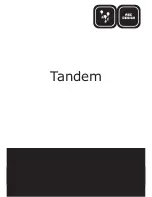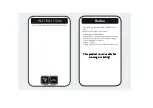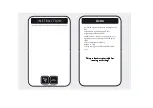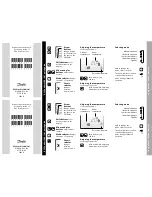
Design Considerations
CY8C20xx7/S CapSense
®
Design Guide
Doc. No. 001-78329 Rev. *E
50
Current Loop Area
: Minimize the return path for current. Hatched ground instead of solid fill should be provided
within 1 cm of the sensors and traces to reduce the impact of parasitic capacitance.
RF Source Location
: Partition systems with noise sources such as LCD inverters and switched-mode power
supplies (SMPS) to keep them separated from CapSense inputs. Shielding the power supply is another common
technique for preventing interference.
5.3.2 Radiated Emissions
Selecting a low frequency for the switched-capacitor clock helps to reduce radiated emissions from the CapSense
sensor. This clock is controlled in firmware using the prescaler option. Increasing the prescaler value decreases the
frequency of the switching clock.
5.3.3 Conducted Immunity and Emissions
Noise entering a system through interconnections with other systems is referred to as conducted noise. These
interconnections include power and communication lines. Because CapSense controllers are low-power devices,
conducted emissions must be avoided. The following guidelines will help reduce conducted emission and immunity:
Use decoupling capacitors as recommended by the datasheet.
Add a bidirectional filter on the input to the system power supply. This is effective for both conducted emissions
and immunity. A pi-filter can prevent power supply noise from effecting sensitive parts, while also preventing the
switching noise of the part from coupling back onto the power planes.
If the CapSense controller PCB is connected to the power supply by a cable, minimize the cable length and
consider using a shielded cable.
Place a ferrite bead around power supply or communication lines to filter out high-frequency noise.
5.4 Software Filtering
Using software filters is one of the techniques for dealing with high levels of system noise.
filters that are useful for CapSense.
Table 5-3. Table of CapSense Filters
Type
Description
Application
Average
Finite impulse response filter (no feedback) with
equally weighted coefficients
Periodic noise from power supplies
IIR
Infinite impulse response filter (feedback) with a
step response similar to an RC filter
High frequency white noise (1/f noise)
Median
Nonlinear filter that computes median input value
from a buffer of size N
Noise spikes from motors and switching power supplies
Jitter
Nonlinear filter that limits current input based on
previous input
Noise from thick overlay (SNR < 5:1), especially useful for
slider centroid data
Event-Based
Nonlinear filter that causes a predefined
response to a pattern observed in the sensor
data
Commonly used during non-touch events to block CapSense
data transmission.
Rule-Based
Nonlinear filter that causes a predefined
response to a pattern observed in the sensor
data
Commonly used during normal operation of the touch surface
to respond to special scenarios such as accidental
multibutton selection
details the RAM and flash requirements for different software filters. The amount of flash required for each
filter type depends on the performance of the compiler. The requirements listed here are for both the ImageCraft
compiler and the ImageCraft Pro compiler.
















































